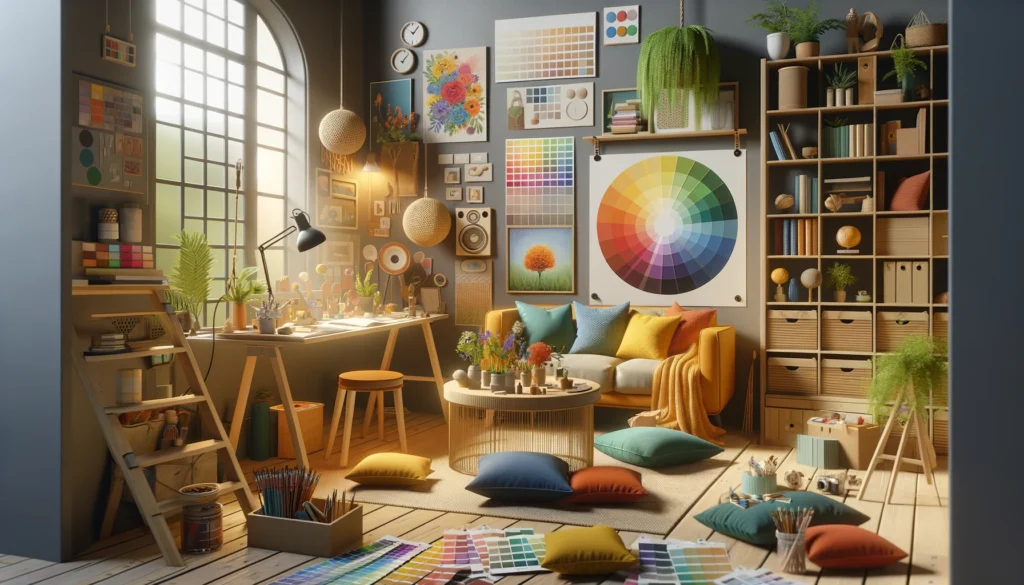Consolidation 2: How to Apply Color Psychology
In this final section, we’ll encourage you to summarize the key takeaways and apply your newfound knowledge of color psychology and self-expression through a creative challenge.
Applying Your Knowledge
As you’ve progressed through this lesson, you’ve delved into the fascinating realm of color psychology and its application in interior design. Let’s consolidate what you’ve learned and explore a creative challenge to deepen your understanding.
Task 1: Summarize the Key Takeaways

Take a moment to reflect on the most crucial insights and the key takeaways from this lesson. Write a summary highlighting the most important concepts and ideas of color psychology and their application in interior design. Consider how these principles can contribute to creating harmonious and mood-enhancing living spaces. Think about colors’ profound impact on our emotions, behaviors, and overall well-being within our homes. Reflect on the significance of warm and cool colors, the power of color combinations, and the role of personal color preferences in self-expression.
Task 2: Personal Color Psychology Assessment
Explore your personal color preferences further. Take some time to analyze your living spaces and consider your favorite colors. Reflect on how your color choices align with your emotions, moods, and self-expression. Are there any changes you want to make based on what you’ve learned in this lesson?
Task 3: Creative Challenge of Colorful Self-Expression

Your challenge is to engage in a creative project that allows you to apply your knowledge of color psychology and self-expression. Choose one or some of the following options:
- Personal Color Palette: Create a personal color palette that reflects your preferences and desired moods. Use this palette as inspiration for a small-scale decor project, such as creating custom artwork, selecting new cushions, or decorating a shelving unit. Share your creative process and the final result with fellow learners, friends, or family members.
- Mood-Enhancing Decor: Select one room in your home and apply what you’ve learned about color psychology to transform its ambiance. Experiment with color combinations, accents, or textiles to achieve the desired mood. Document the changes and share your insights on how the room’s atmosphere has evolved.
- Colorful Self-Expression: Use colors as a means of self-expression by creating a piece of artwork that reflects your personality and emotions. This could be a painting, a collage, or a digital design. Explain the symbolism behind your color choices and share your creation with the course community, your friends, or family members.
- Create Colorful Art: Design and create your own artwork that reflects your personality and desired atmosphere for a particular room. You can use canvas, paint, or even digital tools.
- Colorful Cushions or Throws: Purchase or make colorful cushions or throws that incorporate your chosen accent colors. These can instantly add vibrancy and self-expression to a room.
- Repurpose Furniture: Transform a piece of furniture using paint or fabric in a color that resonates with your desired mood. This could be a coffee table, a chair, or a bookshelf.
- Accent Wall Decor: Choose one wall in a room and decorate it with a collection of framed artwork or photographs in your preferred color palette. This creates a focal point and adds personality to the space.
By taking on this creative challenge, you’ll reinforce your understanding of color psychology and experience firsthand the joy of self-expression and the potential for positive well-being that colors can bring to your living spaces. Enjoy this opportunity to apply what you’ve learned and showcase your creativity!
